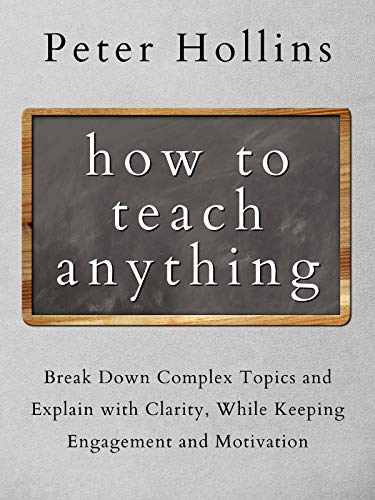How to Teach Anything: Break Down Complex Topics and Explain with Clarity, While Keeping Engagement and Motivation Link to heading
Summary Link to heading
Peter Hollins’ “How to Teach Anything” focuses on providing readers with practical strategies for effectively teaching and explaining complex topics with clarity. The book is part of Hollins’ “Learning how to Learn” series, which emphasizes cognitive psychology principles to make learning and teaching more efficient. Hollins outlines methods for breaking down complicated subjects into understandable segments while maintaining student engagement and motivation throughout the learning process. This involves using simple language, relatable examples, and interactive teaching approaches that cater to different learning styles.
Review Link to heading
The book is well-regarded for its clear and concise writing style, making it accessible to a broad audience, including educators, trainers, and anyone interested in improving their teaching skills. One of its strengths is the author’s ability to integrate psychological insights with practical teaching advice. Hollins uses empirical evidence to support his strategies, which enhances their credibility. However, some readers may find that the insights are more tailored for beginners in teaching and may lack depth for those with more advanced experience in the field.
Key Takeaways Link to heading
- Simplification Techniques: Use analogies and metaphors to break down complex ideas into easier-to-understand parts.
- Active Engagement: Encourage interaction and participation to maintain interest and facilitate deeper learning.
- Tailored Instruction: Recognize and adapt to different learning styles and needs to enhance comprehension and retention.
- Feedback Importance: Use constructive feedback to guide improvement and motivation in learners.
- Continuous Improvement: Constantly seek to refine and adapt teaching methods based on feedback and observation.
Recommendation Link to heading
This book is highly recommended for educators, trainers, instructional designers, and anyone tasked with teaching complex subjects. Its actionable insights make it particularly valuable for those who are new to teaching or looking to refresh their approach with new strategies. Individuals interested in how cognitive psychology principles can be applied to improve teaching practices will also find this resource beneficial.
